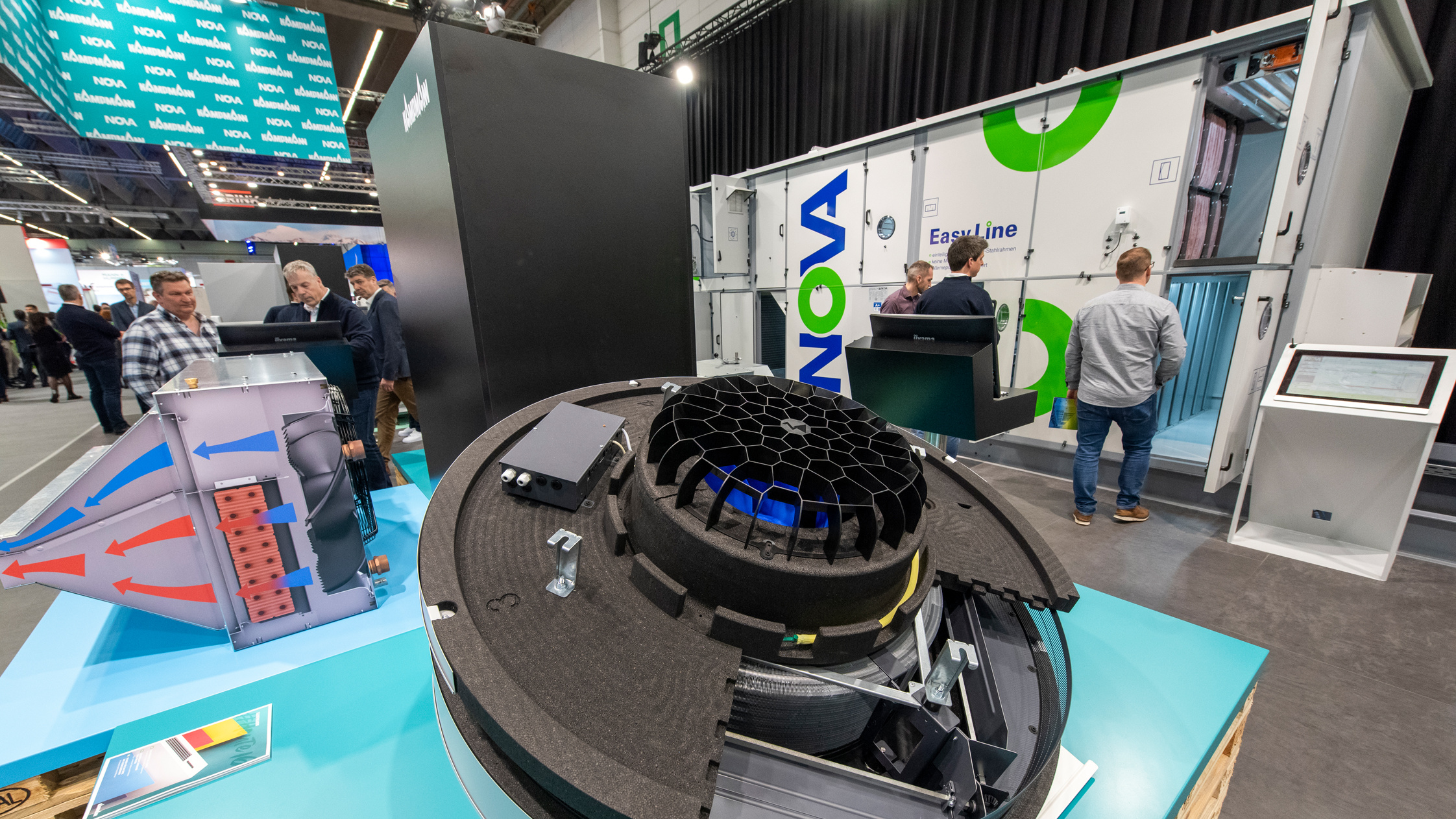Well-ventilated public spaces are essential for a healthy society.

There has been a significant increase in awareness of the importance of good air quality over recent years, and not just in residential buildings. Driven by the growing emphasis on energy efficiency and the desire for a healthy working environment, attention is now turning to the subject of ventilation and air-conditioning technology in non-residential buildings. Whether in offices, production plants, schools or hospitals, the challenges facing ventilation and air-conditioning systems vary depending on the location concerned. ISH is a comprehensive platform for discovering the latest developments and technologies for ventilation and air-conditioning systems in non-residential buildings.
Ventilation systems are essential to ensure a pleasant and healthy indoor climate in commercial and public buildings. However, modern ventilation and air-conditioning technology does much more than simply circulate air. It controls both the temperature and humidity at the same time as filtering pollutants out of the air. Air quality is a crucial factor for user well-being and productivity, particularly in office buildings and other facilities with significant footfall.
The latest technologies designed to meet these specific requirements will be on show at ISH 2025.
- Customised ventilation systems: these systems are designed to meet the specific requirements of non-residential buildings. They permit precise control of air circulation and help save energy.
- Air-conditioning solutions: modern air-conditioning systems can do more than just lower temperatures. They can also regulate levels of humidity and improve air quality by using integrated filter technologies.
- Air-purification technologies: Air-purification systems are indispensable in buildings with numerous users, such as offices and schools. Such systems create a healthy indoor climate by removing particles, viruses and other pollutants from the air.
Customised solutions for diverse industries
The demands placed on ventilation systems vary greatly depending on the sector and building usage. While office buildings prioritise comfort and energy efficiency, the industrial and medical sectors have special technical requirements. ISH presents customised solutions for all areas of application:
- Office buildings: offices call for ventilation systems that not only ensure high air quality, thus improving people's powers of concentration, but also minimise energy consumption. Particularly important in this connection are intelligent control systems that automatically take account of how the building is being used.
- Production facilities: in industrial settings, heavy-duty commercial ventilation systems are used to remove pollutants while keeping operating costs as low as possible.
- Healthcare facilities: in hospitals and nursing homes, hygienically clean air is essential to minimise the risk of infection. Therefore, state-of-the-art indoor air systems are used, which have been specially developed for hygiene-critical environments and can remove viruses, germs and other pathogens from the air.
Sustainability and energy efficiency
Ventilation systems in non-residential buildings contribute to the goals of energy efficiency and sustainability. Modern commercial ventilation systems are designed to use energy as economically as possible at the same time as providing the best possible air quality, which is important not only from an ecological point of view but also with respect to operating costs.
At the coming ISH, visitors will be able to see state-of-the-art solutions for ventilation and air-conditioning in non-residential buildings, which are both sustainable and efficient, as well as learn how modern systems can make buildings not only more comfortable for users but also more environmentally friendly.
